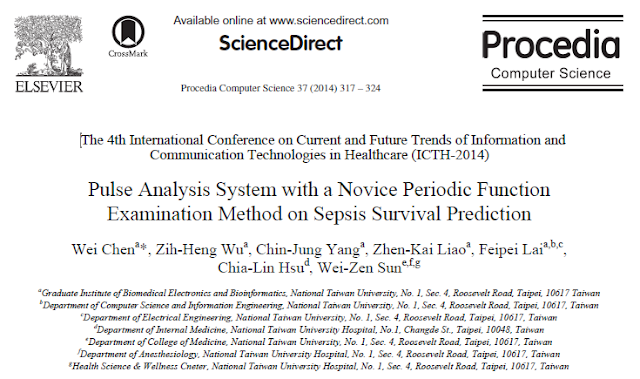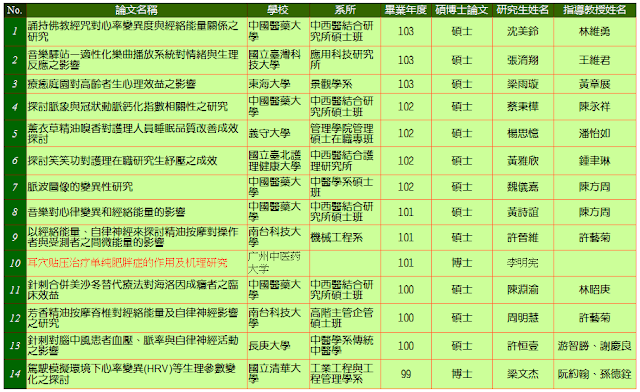除了量測血壓,HRV,心跳,及心律不整外,最新型的心律大師已兼具脈象分析(卽脈診儀)功能
雖然心電圖機(ECG或EKG)也可以透過心電訊號量測HRV,但對於心臟打血及血液循環狀況都無法得知
心律大師利用腕帶內獨家特製的生物感應器(美國,台灣,中國大陸專利),直接測得手橈動脈(卽中醫師把脈處)之血壓波完整的動脈血壓波型,蘊含有多重生理資料,包括心肌收縮打血,大動脈閥(Aortic Valve)開合,二尖瓣膜心閥閉鎖,及周邊血管阻力等
圖一顯示年輕健康者之橈動脈血壓波型,從圖上可以看到血壓波型的重要特徵,包括大動脈閉啟開(左心室收縮打血開始),血流最速點(卽主波峰),大動脈閥關閉點(卽主波谷),重搏波(dicrotic wave;卽第二波峰),二尖瓣膜關閉點及第三小波等
圖二顯示國際知名超音波儀器(USCOM)測得之大動脈血液流速圖與心律大師脈波圖之真時間對照. 結果顯示:當血液流速最高時,也是血壓值最高時;血液流速等於零發生於大動脈閥關閉點
左心室收縮打血愈有力,大動脈閥開啟愈順暢(沒有阻塞或鈣化等),則主波的上昇支愈陡峭,主波高度愈高(卽強脈)
周邊血管阻力愈低(下游血流順暢),則主波下降支愈陡峭
以上兩點若都吻合,則會形成尖銳的主峰角;強而有力的主峰配上尖銳的主峰角,是良好脈象的特徵
反之,左心室打血無力或大動脈閥老化,則主波上昇支緩慢,且容易形成弱脈
周邊血管阻力大(血管緊張或下游血流不順暢),則主波下降支趨於緩慢
以上兩點若吻合,則會形成鈍型的主峰角;弱脈兼具大主峰角是不良脈的特徵
重搏波(卽第二主波)的形成係因為大動脈閥關閉後,血液迴流撞擊閥壁後與原血流合併後造成些微流速及血壓上升
重搏波的波峰點位置之高低,代表大動脈閥關閉時之血壓,也因此反應周邊血管阻力
心律大師將主峰角及重搏波峰點位置標準化後合併成為 ”血管緊張度”
一般健康人血管緊張度低,為非弦脈或輕弦脈(如圖三及圖四)
年紀大,心血管不健康,憂鬱症或肝病患者,常會呈現弦脈或重弦脈(如圖五)
動脈硬化患者也會長期呈現弦脈或重弦脈; 動脈硬化是心臟麻痺(Cardiac Arrest) 及腦中風(Stroke)的主因之一
另外中醫師常用的浮中沉,脈數,脈位,強弱脈,不規則脈等均有分析(見圖六)


































